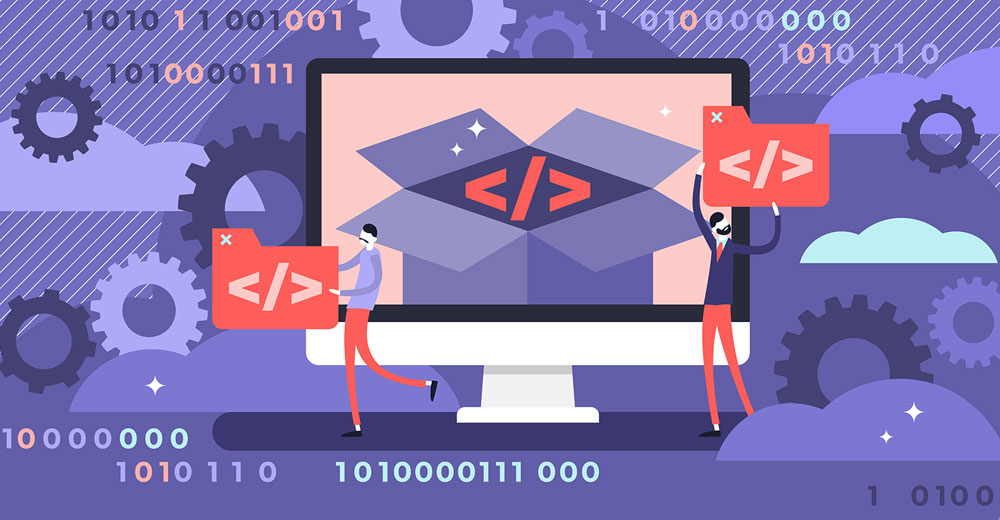Software industry revenue models are changing. Complex and hybrid monetization models will dominate the market to deliver flexibility for producers and end customers.
That assessment comes from technology firm Revenera’s Monetization Monitor: Software Monetization Models and Strategies 2021 report. Part of an annual series, this report provides product executives at software and device companies with benchmarks about software deployment, pricing, and monetization.
Nearly 400 top-level corporate executives at software and device firms responded to a survey revealing the growing importance of SaaS and subscription models for the software industry. The Revenera study shows that today’s dominant software monetization models are subscription and perpetual licensing.
Even more significant is that the implementation of a recurring revenue subscription model was the top driver of change over the past two years. The report highlights steps companies must take during this transition.
Software companies are looking for ways to move to SaaS offerings and recurring revenue. While the transition accelerates, they must also deliver on the needs of their end customers, who might not be able to move at the same pace, according to Nicole Segerer, vice president of products and marketing at Revenera.
The result is a robust mix of monetization and delivery models that technology companies offer today. “Suppliers that want to get ahead of the growing complexity invest in better understanding product usage so that they make better roadmap decisions,” she said.
Report Highlights
Revenera conducted the global survey from mid-April through mid-June 2021. This research project looks at software producers’ software business models, pricing, usage, and transparency. Job levels of the 374 survey respondents ranged from director and above (33 percent), manager/team leader (33 percent), and individual contributors/consultants (34 percent).
Significant findings from the study revealed:
- Most companies have a mix of deployment models. Software as a service and on-premises software are both used extensively (for more than 51 percent of a company’s business) by 34 percent of respondents each. Embedded software is still used extensively by 20 percent.
- SaaS is growing most rapidly, with 59 percent indicating an anticipated increased use over the next 12 to 18 months. An even greater reliance on SaaS is planned by product managers (72 percent).
- Only 30 percent of respondents say that pricing and value are “totally aligned.” Confidence in alignment between price and value jumps significantly for monetization models that are more accurately tied to measurements of usage and engagement. Of companies that can gather usage data “very well,” 61 percent feel pricing is aligned with value.
- Over the past two years, the top reason for changing software monetization models was to implement a recurring revenue model (reported by 62 percent). Organizations planning to change monetization models are doing so primarily to enter new vertical markets (reported by 62 percent); product managers are more active in their pursuit of new vertical markets, with 72 percent looking to make this move.
- Top motivators for changing licensing policies are to provide temporary evaluation/try-before-you-buy (reported by 41 percent); add/improve automated enforcement (39 percent) and add new pricing meters (34 percent).
Neither Good Nor Bad Options
Complex and hybrid monetization models are neither good nor bad “improvements” to the current funding models, according to Segerer. They are just a reality. A one-size-fits-all approach to monetization or deployment strategies does not keep pace with varied customer needs, the report concludes.
“Most software producers today offer many products, some of them SaaS solutions, some cloud, some installed on-premises at their customers, or running on devices. It is neither practical nor realistic to deploy or monetize all those products in the same way,” Segerer told TechNewsWorld.
Recurring revenue through subscriptions is the standard for selling software today. It drives a better customer focus on customer value. It aligns the spend with the value received, with moving buyers’ spending from CapEx to OpEx, she explained.
“It is favored by owners and investors of software companies, increasing software company valuations. Indeed, 62 percent of software producers changed monetization models in the last two years to implement a recurring revenue model,” she added.
Mixed Money Bag
Even as 85 percent of software suppliers plan to continue or increase their reliance on subscriptions in the next 12 to 18 months, 65 percent of suppliers also plan to continue or increase their use of perpetual license models.
That highlights that most software suppliers cannot make a wholesale change in their monetization strategies but are expecting growth overall, Segerer said about the significance of the report’s findings.
“Today’s software suppliers must support customer needs by optimizing a mix of monetization and deployment models,” she added.
However, it is extremely important for software companies to manage the different options in a streamlined way on the backend. That prevents it from becoming an operational headache.
“That is where central entitlement and licensing solutions can help keep the monetization backend streamlined while offering flexibility to customers,” said Segerer.
Fluid Environment
Software companies change quickly and need to be able to implement new models just as rapidly. Software suppliers that can offer hybrid monetization models are able to meet the varied and evolving needs of their customers, noted Segerer.
For example, 37 percent of survey respondents anticipate an increase in usage-based models to meet the needs of customers that prefer to pay based on their actual usage of applications.
With cloud deployments and subscription offerings gaining traction, suppliers must remain focused on data-driven agile development to ensure customer satisfaction and revenue growth. Of companies that gather usage data “very well,” 61 percent feel pricing is aligned with the value delivered to customers, according to the report.
“As suppliers focus on recurring revenue models, the end customers benefit from continuous delivery of new features and value. The distribution of software has become a more agile concept, driven by frequent updates,” maintained Segerer.
Good for Consumers and OEMs
As more software suppliers pursue cloud-native and microservices initiatives, it is increasingly important to ensure that containerized software is only delivered to licensed customers. Suppliers must be able to bridge the gap between continuous delivery and entitlement management systems to accelerate timely, accurate revenue recognition and avoid revenue leakage.
“Suppliers who can reduce friction through integration among quoting, order management, entitlement management, and electronic software delivery systems will be in a better position to increase value for customers,” offered Segerer.
In addition to the increased growth of subscription models, 59 percent of respondents in this year’s survey report an anticipated increase in their use of SaaS, according to Segerer. Yet only 29 percent also report an anticipated decline in on-premises software.
“Suppliers must also be prepared to support multiple deployment models simultaneously, rather than anticipate the move toward a single approach for software delivery,” she said.
New Thought Processes
In a subscription business, every function is in some way a revenue function rather than a cost center. This is a fundamental mindset shift necessary to align organizational incentives, org structures, and budgets, according to Krish Subramanian, co-founder and CEO at Chargebee.
“For example, support is traditionally thought of as a cost center as a percentage of revenue. It is no longer the case. Your renewal and growth of a subscription business are dependent on exceptional customer service. This mindset shift to think about customer ROI instead of product/service ROI is necessary to make the transformation,” he told TechNewsWorld.
With the promise of revenue predictability and recurring income, it is no surprise that post-pandemic, many enterprises are evaluating whether they too should adopt a subscription business model.
Business leaders who are currently pondering the switch need to evaluate whether a subscription model fits their business. They also must figure out if they have a product or service that is consistently wanted by a sizable and growing market, he suggested.
Those considering a transition to a subscription model also should do two critical things: establish a strategic roadmap to such a big leap and build for agility across siloed operations and departments.
“Successful subscription management is far more than just enabling recurring revenue. It involves rethinking your product strategy, customer engagement, and marketing. A business will need a lot of cross-functional collaboration since customer response is on a real-time basis,” he cautioned.















































Social CRM
See all Social CRM